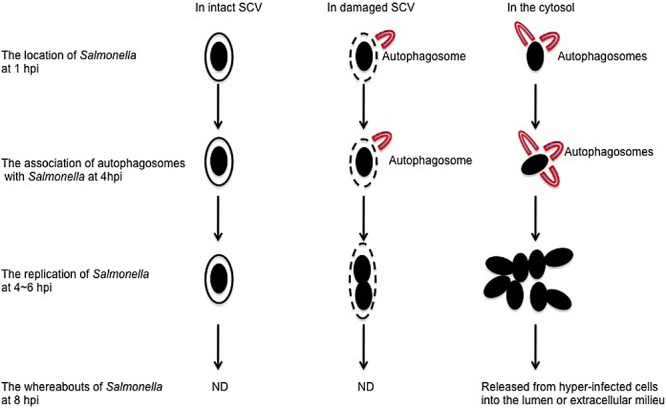FIG 6 .

A proposed model for p62-dependent autophagy favoring Salmonella replication in the cytosol of HeLa cells. In this proposed model, Salmonella likely acquires nutrients supplied by autophagy for its replication. At least three populations of bacteria are present in infected HeLa cells. The first population of bacteria remains in intact Salmonella-containing vacuoles (SCVs). These bacteria replicate slowly, as they do not associate with autophagosomes and are difficult to acquire nutrients from the cytosol. The second population of bacteria is partially exposed to the cytosol through the gaps between damaged SCVs (16). These bacteria are ineffectively coated with ubiquitin and associated with autophagosomes to a low level. They acquire a limited amount of nutrients for replication and replicate faster than the first population of bacteria. The third population of bacteria is completely exposed to the cytosol. These bacteria are effectively coated with ubiquitin and associated with autophagosomes to a high level. They acquire sufficient nutrients from the cytosol and replicate the fastest. Notably, some cells containing the third population of bacteria will undergo cell death and detach from the epithelial layer, resulting in the release of hyperreplicating bacteria that are capable of initiating secondary infections in neighboring cells. The whereabouts of the first and second populations of bacteria at 8 hpi were not determined (ND).
